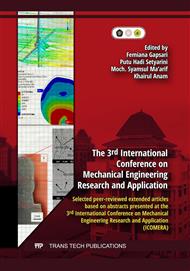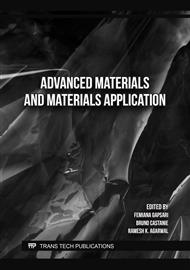p.3
p.11
p.21
p.27
p.35
p.43
p.53
p.59
p.65
Optimizing Micro Friction Stir Spot Welding (mFSSW) of Aluminum Alloy AA1100 Using Neural Network Model
Abstract:
This study explores the optimization of Micro Friction Stir Spot Welding (mFSSW) by investigating the influence of tool profiles on welding outcomes, using aluminum alloy AA1100 with a 0.42 mm thickness as the specimen material. Monitoring temperature and RPM during welding with thermocouples and tachometers, mechanical properties are assessed through tensile shear tests, microhardness measurements, and macrostructural observations. The findings serve as the basis for developing Neural Network models using Rapidminer software, marking a transformative development that positions Neural Networks as potent tools for optimizing welding processes, potentially leading to achieving optimal weld quality. The investigation also delves into three welding tool configurations – the two-stage pin, one-stage pin, and pinless mFSSW probes – highlighting their distinct impacts on tensile shear test values and overall welding quality. Notably, the two-stage pin configuration emphasizes the significance of larger pin diameters and controlled heat generation for enhanced weld strength, while the one-stage pin configuration underscores the pivotal role of pin diameter and elevated temperatures in improving weld quality. The pinless mFSSW probe configuration, on the other hand, emphasizes the importance of shoulder diameter and temperature control for superior tensile shear test results. Leveraging Neural Network modeling for optimization, this study advances our understanding of parameter interactions and underscores the efficacy of Neural Networks in achieving superior tensile shear test values and welding quality in mFSSW, offering valuable insights for future endeavors in the field..
Info:
Periodical:
Pages:
35-42
Citation:
Online since:
May 2024
Price:
Сopyright:
© 2024 Trans Tech Publications Ltd. All Rights Reserved
Share:
Citation:



